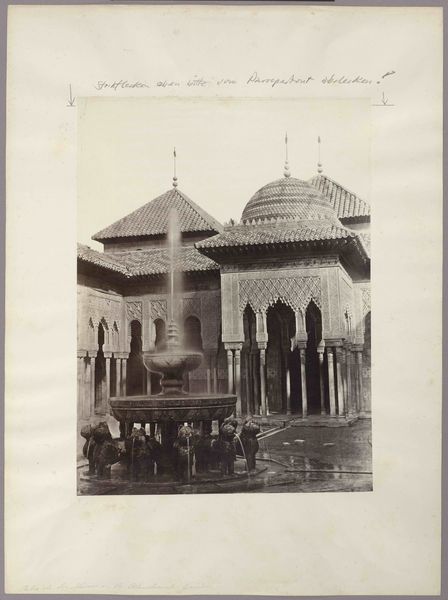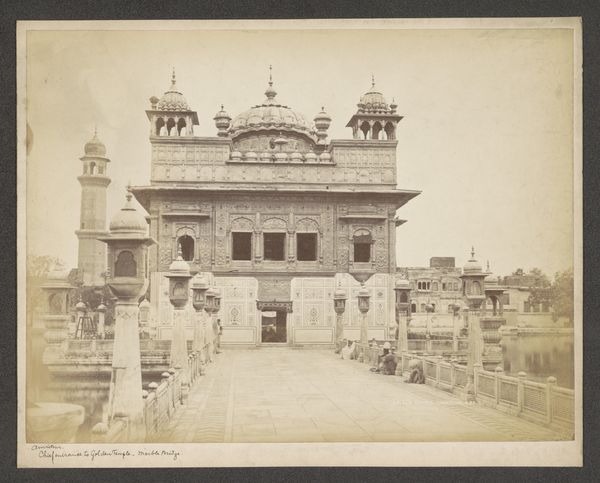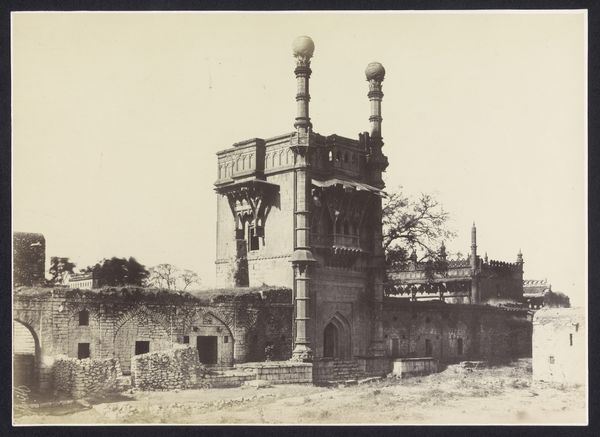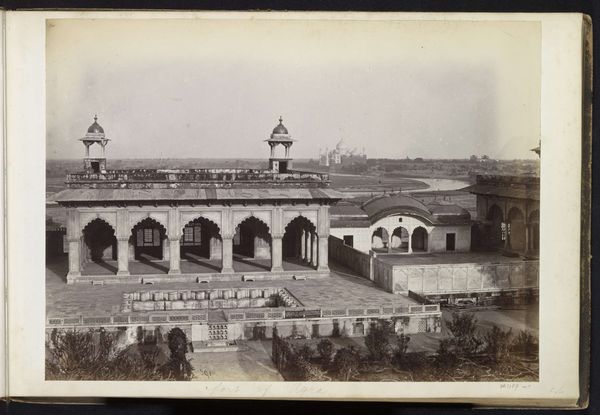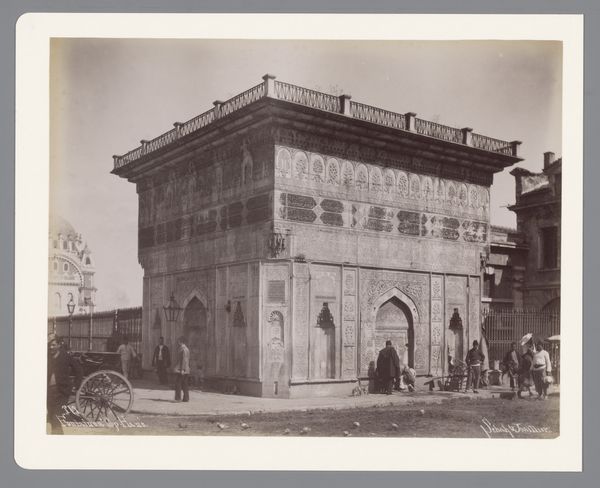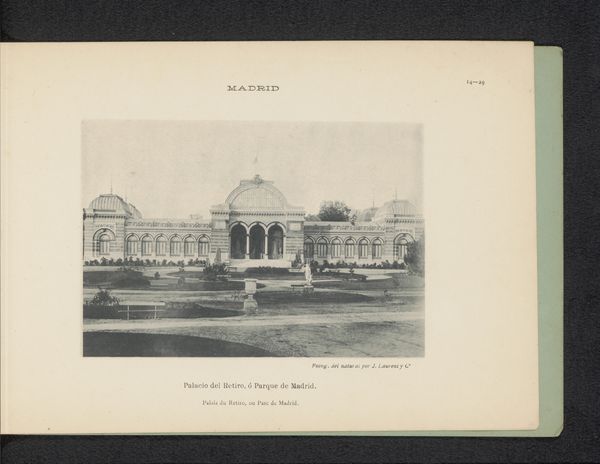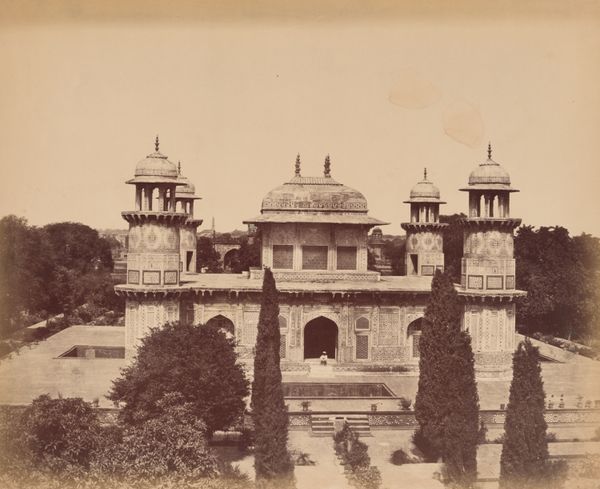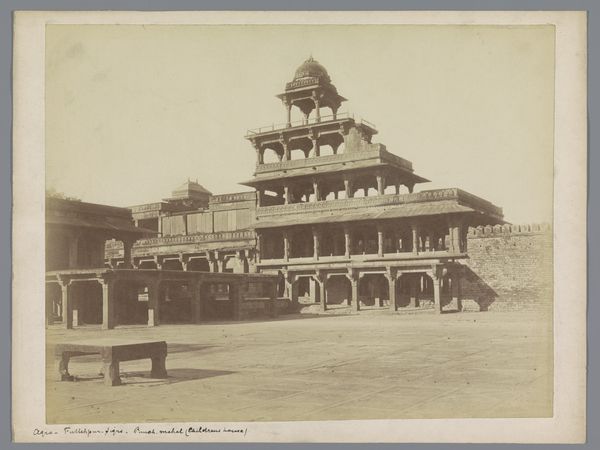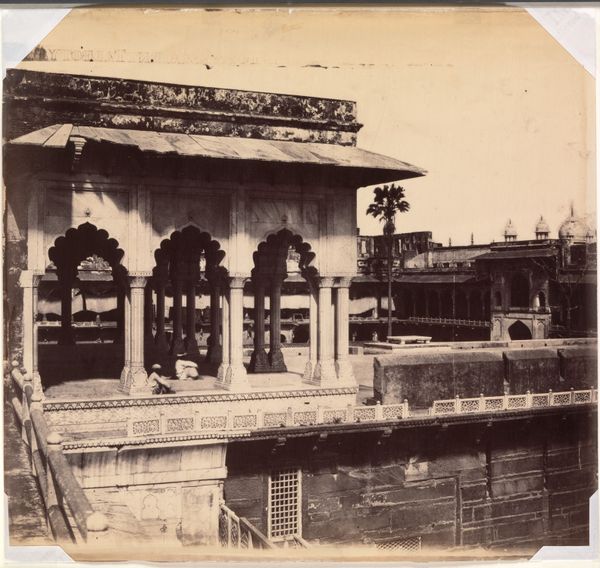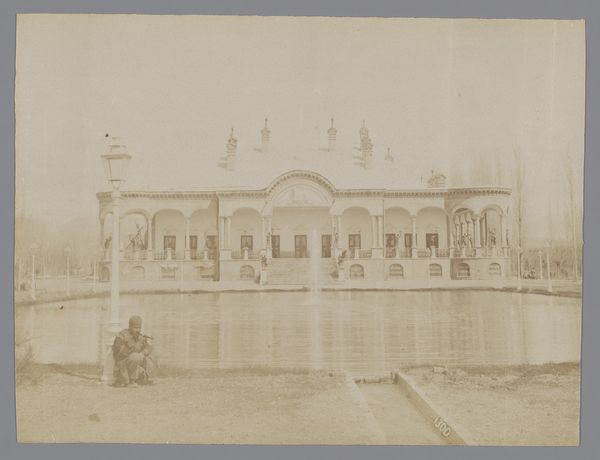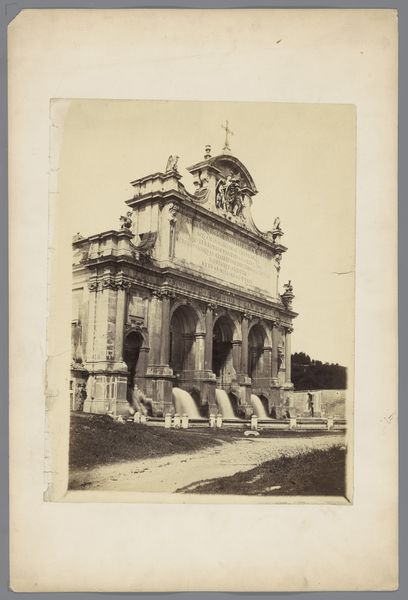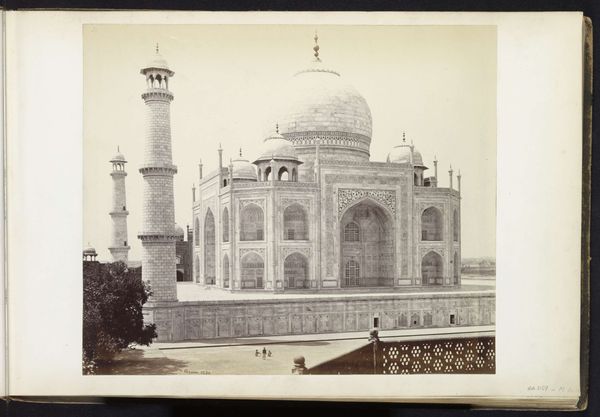
photography, albumen-print
#
landscape
#
photography
#
ancient-mediterranean
#
orientalism
#
islamic-art
#
albumen-print
Dimensions: height 279 mm, width 218 mm, height 320 mm, width 239 mm
Copyright: Rijks Museum: Open Domain
Art Historian: Here we have Samuel Bourne’s albumen print, “Musamman Burg (Jasmine Tower) at Agra Fort, Uttar Pradesh, India,” dating roughly from 1863 to 1870. Curator: It has a somewhat faded grandeur to it. I’m struck by the geometric precision softened by that pervasive sepia tone, that suggests decay, a relic from another time. The starkness also speaks to the building's original function; built to contain. Art Historian: Bourne, of course, operated a very successful commercial photography studio in India during the height of the British Raj. His images were marketed toward a European audience eager for depictions of exotic lands and grand architecture. Curator: Exoticism definitely plays a role. These images were circulated, contributing to colonial narratives and a skewed perception of Indian culture and identity for a Western audience. You feel the weight of that colonial gaze and its problematic, objectifying nature. Art Historian: Absolutely, Bourne’s lens actively shaped the West’s understanding of India, reinforcing certain power dynamics. The Jasmine Tower itself was part of the women’s quarters, offering a privileged, enclosed space, revealing aspects of Mughal court life but inevitably also concealing much. The focus tends to reinforce certain class divisions. Curator: Right. The photograph omits much social context—who inhabited these spaces and the complex social structures surrounding them. What voices are muted? Art Historian: What's also fascinating is that the tower encapsulates both Hindu and Islamic architectural elements, mirroring India's complex cultural layers. Curator: This photographic study could instigate an interrogation into the portrayal of history, revealing forgotten perspectives and prompting viewers to question existing preconceptions of imperialism and ancient societies. Art Historian: I agree, it acts as a launchpad into thinking about both colonial India and the role photography played. Curator: Definitely gives one a lot to think about concerning cultural ownership and biased documentation of marginalized groups.
Comments
No comments
Be the first to comment and join the conversation on the ultimate creative platform.
